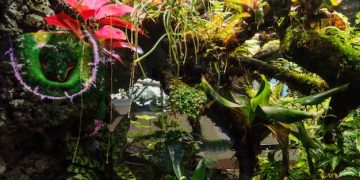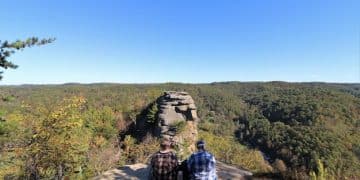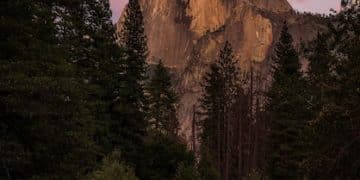Ethical Wildlife Photography in National Parks: 2025 Guidelines
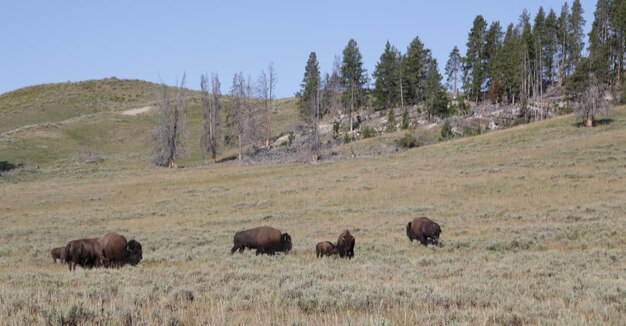
Ethical wildlife photography in national parks in 2025 requires adherence to guidelines that prioritize animal welfare, habitat preservation, and respect for the natural environment, alongside employing best practices to capture stunning images responsibly.
Exploring the stunning landscapes and diverse wildlife within national parks offers incredible opportunities for photographers. However, capturing these moments comes with a responsibility to protect the environment and its inhabitants. In 2025, **wildlife photography in national parks: ethical guidelines and best practices** will be more critical than ever to ensure minimal impact and maximum respect for nature.
Understanding Ethical Wildlife Photography
Ethical wildlife photography extends beyond simply taking a picture. It involves a deep understanding of animal behavior, habitat needs, and the potential impact of our presence. By adhering to ethical principles, photographers can minimize disturbance and contribute to conservation efforts.
Prioritizing Animal Welfare
The primary concern of ethical wildlife photography should always be the well-being of the animals. Avoid actions that could cause stress, fear, or disruption to their natural behaviors.
Respecting Habitats
Protecting the environment is just as important as safeguarding the animals themselves. Stay on designated trails, avoid trampling vegetation, and never leave any trace of your presence.
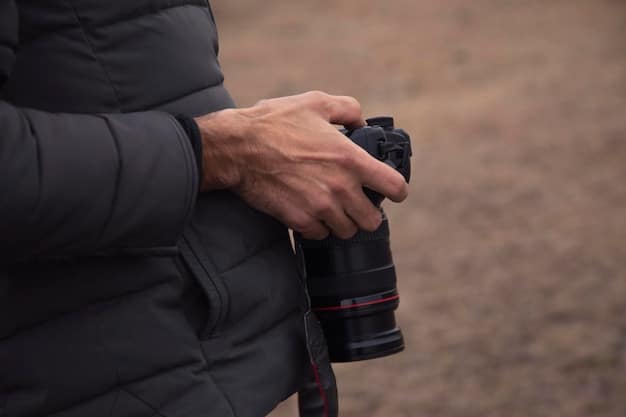
These practices guarantee that future generations will have the chance to see the same environments and animals. Some of these practices are:
- Maintain a safe distance from wildlife, using telephoto lenses to capture images without getting too close.
- Never feed animals, as this can alter their natural foraging habits and make them dependent on humans.
- Avoid using flash photography, especially with nocturnal animals, as it can disorient and stress them.
- Be mindful of nesting seasons and avoid disturbing breeding sites.
Ethical wildlife photography is about respect and responsibility. It’s about putting the needs of the animals and their environment above the desire for a perfect shot.
Best Practices for Minimizing Impact
Minimizing impact while photographing wildlife requires careful planning and execution. By following best practices, photographers can reduce their footprint and help preserve the natural integrity of national parks.
Planning Your Visit
Before heading out, research the specific park you plan to visit, including regulations, sensitive areas, and animal activity patterns. This preparation can help you avoid unintentional disturbances.
Using Appropriate Equipment
Employing the right gear is essential for capturing images without compromising ethical standards. Telephoto lenses, tripods, and remote triggers can help you maintain a safe distance while still getting stunning shots.
Appropriate equipment will reduce your impact on the Wildlife and make your photos better. Some of the equipment that should be considered are:
- Invest in a high-quality telephoto lens with a focal length of at least 400mm to maintain a safe distance.
- Use a sturdy tripod to minimize camera shake and allow for sharp images at longer focal lengths.
- Consider using a remote shutter release to avoid disturbing animals with sudden movements.
- Bring binoculars or a spotting scope to observe wildlife from afar without approaching too closely.
Minimizing impact involves thoughtfulness and preparation. It’s about respecting the environment and ensuring that your photography doesn’t negatively affect the wildlife you’re capturing.
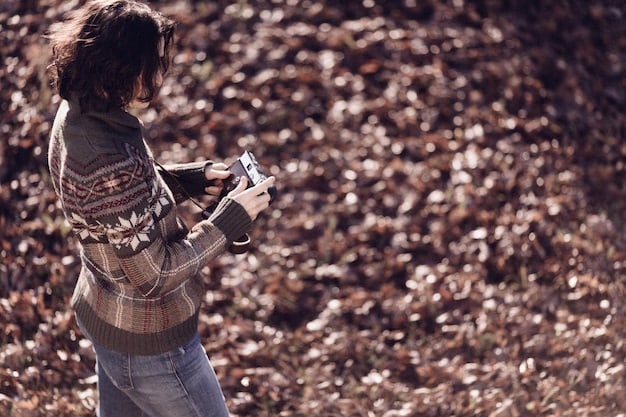
Understanding Park Regulations
National parks have specific regulations in place to protect wildlife and their habitats. Familiarizing yourself with these rules is crucial for responsible photography. Always check for updated guidelines before your visit.
Staying on Designated Trails
Most parks require visitors to stay on marked trails to protect fragile ecosystems and minimize disturbance to wildlife. Adhering to this rule is a fundamental aspect of ethical photography.
Respecting Closure Areas
Certain areas within national parks may be temporarily closed to protect sensitive wildlife habitats or breeding sites. Respecting these closures is vital for conservation efforts.
Park rangers and visitor centers are usually very helpful to explain the park rules and laws. Make sure to check in with them!
- Obey all posted signs and regulations regarding trail closures and restricted areas.
- Check with park rangers for the latest updates on wildlife activity and potential hazards.
- Be aware of seasonal closures, especially during mating or nesting seasons.
Understanding park regulations is about respecting the boundaries set to protect wildlife and their habitats. It’s a crucial step in ensuring your photography aligns with conservation goals.
The Role of Technology in Ethical Photography
Technological advancements offer new opportunities to practice ethical wildlife photography. Drones, remote cameras, and camera traps can capture images without direct human presence, reducing disturbance and stress on animals.
Benefits of Drones
Drones equipped with cameras can provide unique aerial perspectives of wildlife without getting too close. However, it’s essential to operate them responsibly and in accordance with park regulations.
Using Remote Cameras
Remote cameras and camera traps can be placed in strategic locations to capture images of elusive wildlife without human intervention. This technology allows for unobtrusive observation and documentation.
Using technology can reduce the impact to the Wildlife and make it easier to capture moments that otherwise you would have to interact with. Some of the other benefits of these technologies are:
- Drones can capture stunning aerial views of wildlife and landscapes, reducing the need for invasive hiking or vehicle use.
- Camera traps can document animal behavior in remote or sensitive areas without direct human presence.
- Remote-controlled cameras allow photographers to trigger shots from a safe distance, minimizing disturbance.
Technology offers exciting possibilities for ethical wildlife photography. By embracing these tools responsibly, photographers can capture incredible images while minimizing their impact on the environment.
Promoting Conservation Through Photography
Wildlife photography can play a powerful role in raising awareness and promoting conservation efforts. By sharing images and stories that highlight the beauty and fragility of nature, photographers can inspire others to protect these precious ecosystems.
Sharing Educational Content
Use your photographs as a platform to educate others about wildlife, habitats, and conservation challenges. Share information about the species you photograph and the importance of protecting their environment.
Supporting Conservation Organizations
Partner with conservation organizations and donate a portion of your photography revenue to support their work. By contributing financially, you can directly contribute to conservation efforts.
Pictures can be very impactful for future generations and present events. Spreading the word will make a lasting impact.
- Use your images to tell stories about the beauty and fragility of wildlife and their habitats.
- Partner with conservation organizations to share your work and support their efforts.
- Donate a portion of your photography revenue to conservation projects.
- Participate in citizen science initiatives by submitting your photos for research purposes.
Photography goes beyond capturing images; it’s about inspiring change. By using your work to promote conservation, you can help protect wildlife and their habitats for future generations.
The Future of Ethical Wildlife Photography
As technology advances and awareness of environmental issues grows, the standards for ethical wildlife photography will continue to evolve. Staying informed and adaptable is crucial for photographers committed to responsible practices. The trend is to impact the nature as little as possible.
Staying Updated on Guidelines
Keep abreast of the latest guidelines and best practices for wildlife photography in national parks. Organizations like the National Park Service and conservation groups regularly update their recommendations based on new research and conservation priorities.
Embracing Sustainable Practices
Commit to sustainable practices in all aspects of your photography, from travel and equipment choices to waste reduction and energy conservation. Every small effort can make a difference in minimizing your environmental impact.
Ethical guidelines have and will keep evolving over time, in a dynamic enviroment, that should be accounted for. The guidelines should be updated periodically.
- Continuously educate yourself about ethical photography practices and guidelines.
- Use sustainable travel methods, such as public transportation or carpooling, to reduce your carbon footprint.
- Choose eco-friendly equipment and supplies whenever possible.
- Minimize waste and recycle responsibly during your photography trips.
The future of ethical wildlife photography lies in continuous learning, adaptation, and a commitment to sustainability. By embracing these principles, photographers can help ensure that their work contributes to the long-term health and preservation of our natural world.
| Key Point | Brief Description |
|---|---|
| 🐾 Animal Welfare | Prioritize animal well-being and avoid disturbance. |
| 🏞️ Habitat Protection | Respect natural environments and minimize impact. |
| 📸 Tech Responsibly | Use technology like drones ethically, following park rules. |
| 📣 Promote Conservation | Educate and support wildlife conservation efforts. |
FAQ
▼
Ethical wildlife photography prioritizes the well-being of animals and their habitats, ensuring minimal disturbance. It involves respecting park regulations, using appropriate equipment, and promoting conservation efforts.
▼
Minimize your impact by maintaining a safe distance, staying on designated trails, avoiding flash photography, and never feeding animals. Utilize telephoto lenses and remote triggers to capture images unobtrusively.
▼
National parks have specific regulations to protect wildlife and habitats. Stay on marked trails, respect closure areas, and check with park rangers for updated guidelines and potential hazards before your visit.
▼
Drones, remote cameras, and camera traps let you capture images without human presence. This reduces disturbance and stress on animals, providing unique perspectives while maintaining ethical standards.
▼
Use wildlife images to educate about those animals in their ecosystem to share with others to highlight the beauty and fragility of nature. Support conservation organizations and donate a portion of photography revenue to conservation projects.
Conclusion
In 2025, ethical wildlife photography in national parks will continue to emphasize responsible practices and a deep respect for nature. By adhering to guidelines, minimizing impact, and promoting conservation, photographers can capture stunning images while contributing to the preservation of these precious ecosystems.
